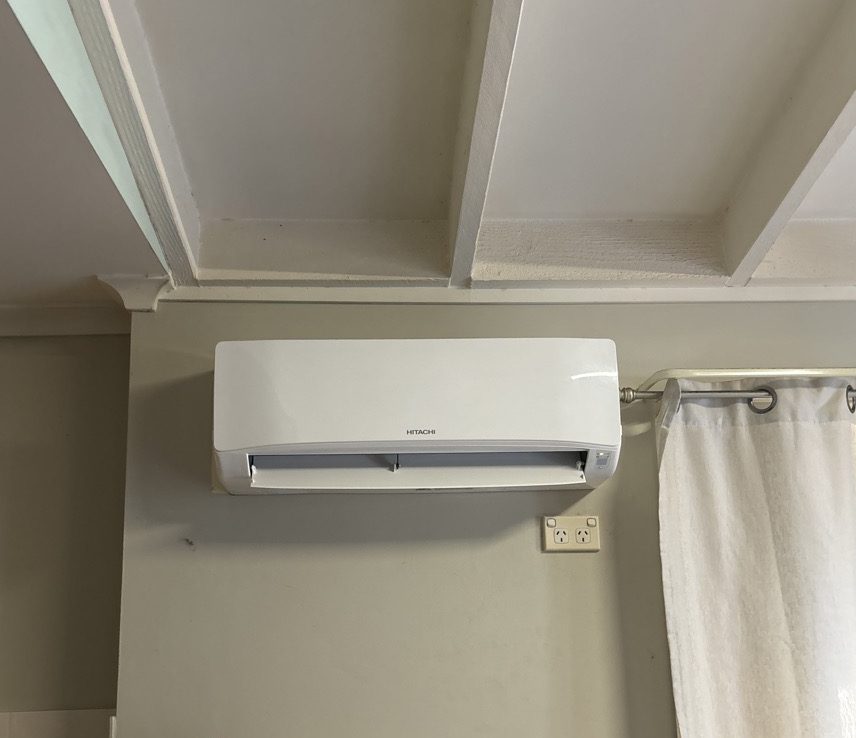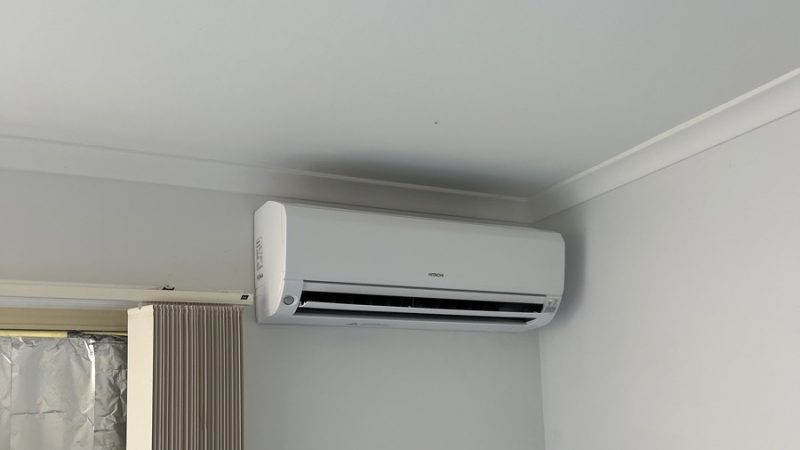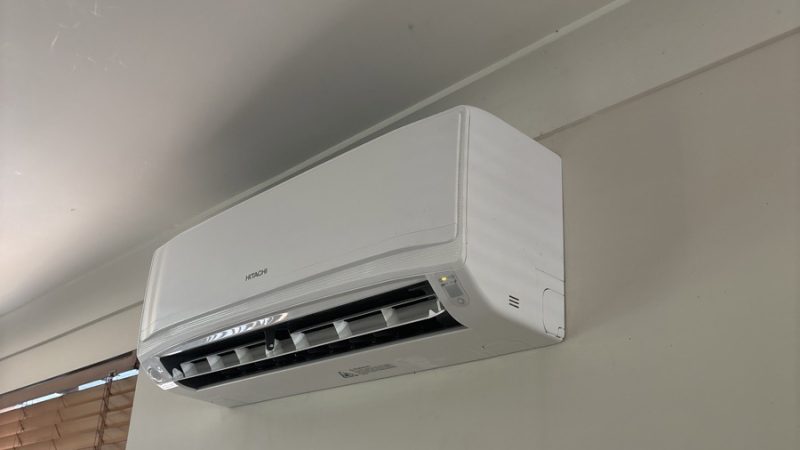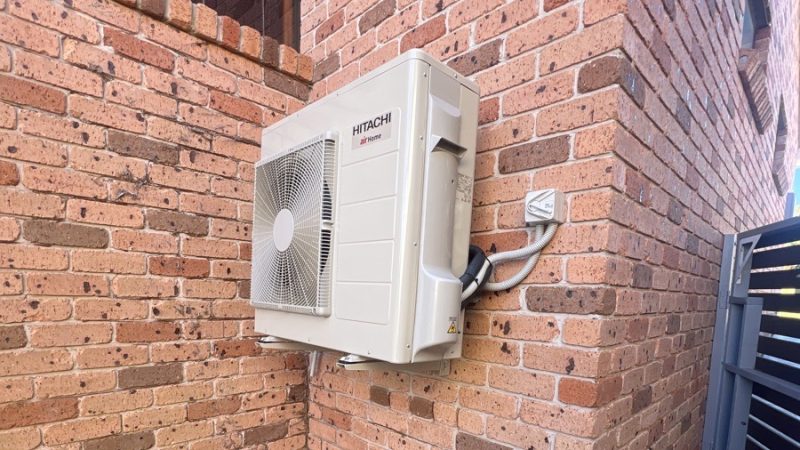Articles / Air Conditioning
Your Guide to Split Air Conditioning Installation in Daisy Hill
26 December 2024

We are experts at split air conditioning installation in Daisy Hill. These systems, comprised of indoor and outdoor units, offer energy-efficient cooling tailored to your exact needs. Their quiet operation and secure installation make them a great choice. We’ll help you assess your home’s needs, considering factors such as room size and insulation, to ensure optimum performance. We’ll guide you in choosing the most efficient model that matches both your budget and aesthetics.
Proper preparation leads to a smooth installation process. And remember, once installed, regular maintenance keeps it running at its best. Stick around, we’ve got loads more great insights in store for you!
Key Takeaways
– Split AC systems in Daisy Hill combine indoor and outdoor units for efficient, quiet cooling.
– Assessing home needs like energy efficiency, room layout, and cost is key before installation.
– Choosing the right AC model with high SEER ratings and minimal noise can enhance comfort and savings.
– Preparations for installation include understanding the timeline, and technical aspects, and setting a contingency budget.
– Regular maintenance post-installation ensures optimal performance and longevity of the Daisy Hill AC system.
Understanding Split Air Conditioning Systems
Before we dive into the installation process, we must understand what split air conditioning systems are and how they work. Unlike traditional air conditioning units, split ACs consist of two main components: an indoor unit that disperses cold air and an outdoor unit that houses the compressor.
One of the primary split AC benefits is its energy efficiency. These systems only cool the rooms you’re using, meaning we don’t waste energy cooling areas that are unoccupied. We can even adjust the temperature for each room, leading to more personalized comfort and further energy savings.
Split ACs are also a lot quieter. The noisy parts are all on the outside unit, so we don’t have to shout over the sound of our AC. And with a split AC, we don’t have to deal with the hassle and potential security risks of window units.
Assessing Your Home’s Needs
Let’s take a closer look at your home to determine what type of split air conditioning system would best suit its needs.
This process involves two essential steps: an energy efficiency evaluation and a room layout assessment.
First, we’ll carry out an energy efficiency evaluation. This is crucial because a more energy-efficient home requires a less powerful AC system, which could save you quite a bit of money. We’ll examine your home’s insulation, windows, and other factors that can affect its cooling needs.
Next, we’ll assess your room layout. Here we consider factors such as the size, number of windows, sun exposure, and the purpose of each room. For instance, a kitchen or a room with multiple windows might need more cooling power than a small bedroom.
Cost considerations are also essential. We’ll help you understand the initial installation costs and the long-term energy costs associated with different types of split AC systems.
Lastly, we’ll discuss the ductless benefits. Ductless systems are generally more energy-efficient and offer more flexibility in terms of where they can be installed. They also improve indoor air quality by reducing the risk of air leaks from ducts.
Choosing the Right AC Model
Once your home’s needs are thoroughly assessed, we can then proceed to help you choose the ideal AC model for your Daisy Hill home.
It’s not just about cooling performance; several other factors come into play like energy efficiency, cost effectiveness, noise level, and aesthetics.
Energy efficiency is a big one. It’s important to select a model that cools your home effectively without consuming too much electricity. AC units with a high Seasonal Energy Efficiency Ratio (SEER) offer more cooling for each unit of energy they consume, making them cost-effective in the long run.
Noise level is another critical factor to consider. You wouldn’t want a unit that interrupts your peace with its noise. Look for models that operate quietly, ensuring comfort in more ways than one.
Lastly, let’s not forget about aesthetics. Your AC unit should blend well with your home’s decor. A wide range of sleek and stylish models are available in the market today, ensuring you don’t have to compromise on your home’s look for comfort.
Preparing for the Installation
After picking the perfect AC model for your home, it’s time to gear up for the installation process. The first step in preparing is understanding the installation timeline. We know you’re eager to experience the comfort of your new split air conditioner, but patience is key. The process usually takes a few days, depending on the complexity of the installation.
It’s not just a matter of plugging in a unit; there’s electrical wiring, placement of indoor and outdoor units, and other technical aspects to consider.
Cost considerations are also crucial. Remember, the initial purchase price of the AC unit isn’t the only expense. There’s the cost of installation, which varies depending on the model and your home’s specific needs. It’s wise to get a few quotes from local installers in Daisy Hill to ensure you’re getting a fair deal.
To avoid any surprises, we recommend setting aside a contingency budget for any unexpected costs that may arise. This preparation stage is all about doing your homework and being ready for what the installation process entails.
Next, we’ll discuss ‘The Installation Process Explained’.
The Installation Process Explained
Now that we’ve covered the preparation stage, it’s time to shed light on what the installation process of a split air conditioner in Daisy Hill involves.
The installation steps are straightforward, but common mistakes can occur if not handled correctly.
Firstly, the indoor and outdoor units are mounted securely. This is followed by drilling holes in the wall to connect the two units. These holes must be drilled at the correct angle to prevent water leakage.
Next, the electrical and refrigerant lines are connected through these holes. It’s a common mistake to not properly insulate these lines, leading to reduced efficiency and increased costs.
Speaking of costs, it’s worth considering the energy efficiency of your new AC system. An energy-efficient system might cost more upfront, but it’ll save you money in the long run through lower utility bills.
However, the installation cost can vary depending on the complexity of the work and the specific requirements of your home. Always get a detailed quote before proceeding with the installation.
Maintaining Your New AC System
Keeping your newly installed AC system in top-notch condition is key to enjoying its full benefits and longevity. Regular maintenance is a crucial aspect of this. It’s not just about preserving the system’s functionality, but also about enhancing its energy efficiency. A well-maintained AC system doesn’t just keep your home cool, it can also help reduce your energy bills.
Now, you’re probably wondering, ‘What does regular maintenance entail?’ Well, it’s all about sticking to a routine. Seasonal check-ups, for instance, are an absolute must. Just before the onset of a hot summer or a cold winter, we recommend having your AC system inspected by a professional. They’ll be able to identify any potential issues before they escalate and affect the system’s performance.
Another key part of regular maintenance is filter replacement. Over time, the filters in your AC system can get clogged with dust and other debris, which can hinder airflow and efficiency. We advise replacing or cleaning your filters every 1-2 months, depending on usage and air quality in your home.
Frequently Asked Questions
What Are the Average Costs Associated With Split Air Conditioning Installation?
We’ve found that installation expenses for split air conditioning can vary widely. On average, you’re looking at around $2,000 to $5,000, depending on the unit and complexity of the installation.
Of course, if you’re handy, DIY options could significantly reduce these costs. However, we caution that proper installation is critical for the unit to function effectively, so it’s often worth the investment to hire professionals.
Can I Install the Split Air Conditioner Myself Without Professional Help?
While it’s possible to do a DIY installation of a split air conditioner, we don’t recommend it. This task requires technical knowledge and adherence to safety precautions, which only professionals possess.
Improper installation can lead to system inefficiency and even safety hazards. We strongly suggest hiring a professional for the job to ensure the system is installed correctly and safely.
How Energy Efficient Are Split Air Conditioning Systems Compared to Other AC Types?
We’re often asked about the energy efficiency of split air conditioning systems. Compared to other types, they’re usually more energy efficient. This leads to installation savings.
They also have less environmental impact due to their design. Over time, you’ll notice their cost-effectiveness, especially in areas where you need specific cooling.
What Warranties or Guarantees Are Usually Offered With Split Air Conditioners?
When it comes to warranties or guarantees with split air conditioners, they’re generally quite comprehensive. We’ve found that most manufacturers offer long-term warranties that cover a wide range of potential issues.
These often include maintenance benefits and repair coverage, ensuring that if something goes wrong, you’re not left out in the cold. It’s always worth checking the specifics, though, as coverage can vary between brands.
How Often Should I Get My Split Air Conditioning System Serviced by a Professional?
We recommend getting your split air conditioning system professionally serviced at least once a year. Regular maintenance ensures its optimal performance and longevity.
While you can do minor DIY servicing, comprehensive checks should be left to experts. They’ll detect issues that aren’t visible to the untrained eye.
Conclusion
We have walked you through the basics of split air conditioning installation in Daisy Hill. From understanding the system, assessing your home’s needs, and choosing the right model, to preparing and understanding the installation process, we’ve got you covered.
Don’t forget, that once your new AC is up and running, proper maintenance is key to ensuring it runs efficiently. Trust us, with this guide, you’re well-equipped for the journey towards a cooler, more comfortable home.



